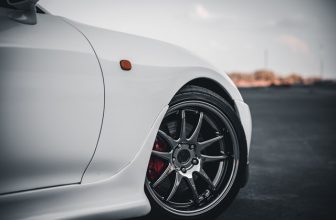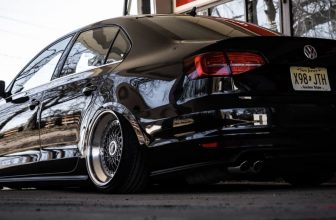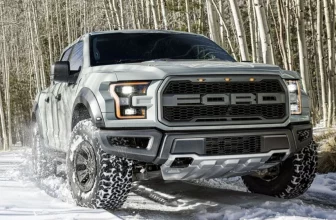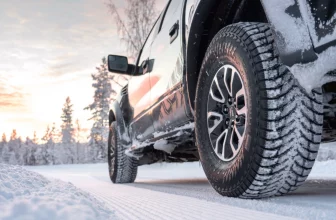How do autocross racers manage the neck-breaking speeds without serious safety concerns? Are there any similarities between the racetrack and ordinary passenger tires? Racetrack and autocross tires offer premium traction.
Racing vehicles experience dynamic acceleration and braking. Tires need to respond well to steering controls. Split seconds make a difference between winning and losing.
Racing professionals can tell you that acceleration is not the only thing that matters. Autocross racing requires wit, grit and resilience. Drivers must make quick situational judgments. How do tires impact the performance of racing cars? Do drivers have options to enable them to achieve extreme performance levels?
The best performance tires for racetrack and autocross possess several desirable qualities. The tires are available in different sizes and brands to fit the sporting needs of individuals. Despite the multiple tire options, drivers struggle to find the right pieces of information on tires. As a result, they settle on low-performance racing tires and fail to unlock the beast mode of their highly-priced vehicles.
We piece together any relevant information regarding racetrack and autocross tires and provide recommendations for the best performance tires. We want to streamline your tire shopping experience and improve the decision-making process. To cap it all, we answer all the burning questions that average drivers have about racetrack tires.
| Tire name | Overall Rating | Wet performance | Hydroplaning resistance | Wet traction | Dry performance | Cornering stability | Dry traction | Steering response | Winter/snow performance | Comfort performance | Ride quality | Noise score | Treadwear performance |
|---|---|---|---|---|---|---|---|---|---|---|---|---|---|
| Toyo Proxes RA1 | 8 | 7.1 | 7 | 7.3 | 9.3 | 9.4 | 9.2 | 9.2 | 0 | 7.1 | 7.2 | 6.9 | 8.6 |
| Toyo Proxes R888R | 7 | 5.3 | 4.9 | 5.7 | 9.3 | 9.2 | 9.3 | 9.2 | 0 | 6.8 | 7.5 | 6.1 | 7 |
| Toyo Proxes R888 | 7 | 5 | 4.3 | 5.8 | 9.3 | 9.2 | 9.3 | 9.3 | 0 | 6 | 6.9 | 5.2 | 6.8 |
| BFGoodrich g-Force R1 | 7 | 2.9 | 2.6 | 3.2 | 8.8 | 8.7 | 9 | 8.9 | 0 | 6.7 | 6.5 | 6.8 | 7.7 |
Unique qualities of the racetrack and autocross tires
Soft and sticky tread compound
Autocross tires spend most of their time on dedicated race tracks. The tracks are usually well-tarmacked roads, so the surfaces they drive on are even. In that regard, tire manufacturers trade every desirable quality of the tires for superior dry traction.
Ride comfort and quality do not matter much, same to wet traction, winter traction and defenses against hydroplaning. So, how do manufacturers ensure perfect grip on the roads? Do they use ordinary tire materials? How do they design the treads of the tires?
The distinct feature that gives autocross tires a difference is soft and sticky rubber. Manufacturers mold the rubber into a thick tread. The treads lack the fancy patterns which are common in other tire categories.
With the soft materials, the tires grip firmly on the roads. With excellent dry traction, drivers handle the vehicles better. The response to steering controls is perfect. Additionally, drivers enjoy predictable acceleration and deceleration. Braking is almost instantaneous.
Heat-resistant manufacturing compounds
Autocross racing takes place in loops. Drivers make several rounds on banked surfaces. Each motocross driver has to negotiate a couple of corners for every lap they take. Given the intensity of braking and acceleration on the track, heat generation around the tires is enormous. It is common to spot dark marks around the racing track and visible traces of smoke when drivers engage in brakes.
For a standard tire, the conditions of autocross racing will significantly decrease their longevity. When designing the best performance tires for racetrack and autocross, manufacturers incorporate sufficient defenses against the effects of the heat.
They utilize compounds having excellent heat resistance. The tires can sustain elevated temperatures without losing their dry traction capabilities. The heat-resistant compounds ensure that the tires do not deform or weaken. Drivers can use the tires for an extended time without worrying about the quality of traction.
Low-profile construction
One of the contributing factors to the reliability of a racing car is its overall stability. Instability on the racing track is consequential and can cause cars to topple when negotiating corners at high speed. Apart from the race car design, manufacturers depend on the tires to enhance stability.
Tires manufacturers deliberately use low-profile constructions. The low-laying tires ensure that the vehicle has sufficient ground clearance and adequate stability for high-speed driving.
Superior responsiveness to braking
Autocross racing demands quick responsiveness. Driving patterns change from acceleration to deceleration real quick. Drivers must observe lane discipline and respond to emergencies promptly. For better performance, manufacturers design the best performance tires for racetrack and autocross to provide excellent responsiveness to braking. Although the tires use soft rubber, the tires capitalize on the dry traction to optimize braking efficiencies. The tires do not skid when drivers engage brakes and do not peel off even under large braking forces.
High-speed ratings
Autocross racing is all about hitting the highest speed limits. For every tire category, there are speed ratings that dictate how fast you can drive. The best performance tires for racetrack and autocross have Z, Y and W-speed ratings. Drivers can ultimately test the limits of their vehicles on approved race tracks.
How do the performances of best performance tires for racetrack and autocross compare with other tire categories?
These are special-use tires. They are DOT-legal and are only suitable for racing competitions. Although they provide the best dry traction among tire categories, their use is restricted to track racing. Drivers are prohibited from using them on the highways.
The tires lack in terms of wet and winter traction. They only perform well in warm weather. Very few tires in this category can offer acceptable levels of wet traction.
Verdict
You don’t have to break the bank trying to purchase racetrack and autocross tires for a daily-commute vehicle. These are super high-performance tires that should be driven on race tracks only. Only sporting enthusiasts aiming to compete on race tracks need to purchase these tires.
Frequently Asked Questions (FAQ)
Are autocross tires good for all-season street driving?
Racetrack and autocross tires do not meet the requirements for regular highway driving. The tires are only approved for race track driving. Note that these tires have the lowest wet and snow traction capabilities.
How long do autocross tires last?
Autocross tires have lower service lives than standard tires. Racing is an aggressive sport that takes a toll on the durability of the tire. With that said, the durability of autocross and racetrack tires is lower than that of standard performance tires.
Which tires are good for autocross racing?
Autocross racing requires the use of extreme performance tires. Drivers can choose from a wide variety of brands and sizes available in the market.






